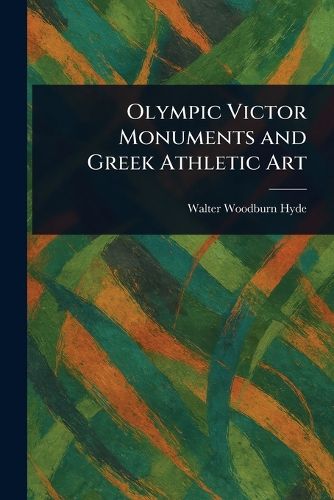Readings Newsletter
Become a Readings Member to make your shopping experience even easier.
Sign in or sign up for free!
You’re not far away from qualifying for FREE standard shipping within Australia
You’ve qualified for FREE standard shipping within Australia
The cart is loading…






This title is printed to order. This book may have been self-published. If so, we cannot guarantee the quality of the content. In the main most books will have gone through the editing process however some may not. We therefore suggest that you be aware of this before ordering this book. If in doubt check either the author or publisher’s details as we are unable to accept any returns unless they are faulty. Please contact us if you have any questions.
Explore the grandeur of the ancient Olympic Games through the lens of art and history in "Olympic Victor Monuments and Greek Athletic Art" by Walter Woodburn Hyde. This meticulously prepared volume delves into the world of ancient Greece, examining the sculptures and monuments erected to honor Olympic victors. Discover the profound connection between athletic achievement and artistic expression as the book illuminates the cultural significance of the Olympics in ancient society.
Journey back in time to witness the splendor of these athletic celebrations and the lasting legacy they left on the world of art. From statues immortalizing triumphant athletes to the architectural marvels that housed the games, this book offers a comprehensive overview of the intersection of sports, art, and history in ancient Greece. Ideal for anyone interested in the Olympics, ancient history, or the rich artistic heritage of Greece, this book provides a fascinating glimpse into a bygone era.
This work has been selected by scholars as being culturally important, and is part of the knowledge base of civilization as we know it.
This work is in the public domain in the United States of America, and possibly other nations. Within the United States, you may freely copy and distribute this work, as no entity (individual or corporate) has a copyright on the body of the work.
Scholars believe, and we concur, that this work is important enough to be preserved, reproduced, and made generally available to the public. We appreciate your support of the preservation process, and thank you for being an important part of keeping this knowledge alive and relevant.
$9.00 standard shipping within Australia
FREE standard shipping within Australia for orders over $100.00
Express & International shipping calculated at checkout
This title is printed to order. This book may have been self-published. If so, we cannot guarantee the quality of the content. In the main most books will have gone through the editing process however some may not. We therefore suggest that you be aware of this before ordering this book. If in doubt check either the author or publisher’s details as we are unable to accept any returns unless they are faulty. Please contact us if you have any questions.
Explore the grandeur of the ancient Olympic Games through the lens of art and history in "Olympic Victor Monuments and Greek Athletic Art" by Walter Woodburn Hyde. This meticulously prepared volume delves into the world of ancient Greece, examining the sculptures and monuments erected to honor Olympic victors. Discover the profound connection between athletic achievement and artistic expression as the book illuminates the cultural significance of the Olympics in ancient society.
Journey back in time to witness the splendor of these athletic celebrations and the lasting legacy they left on the world of art. From statues immortalizing triumphant athletes to the architectural marvels that housed the games, this book offers a comprehensive overview of the intersection of sports, art, and history in ancient Greece. Ideal for anyone interested in the Olympics, ancient history, or the rich artistic heritage of Greece, this book provides a fascinating glimpse into a bygone era.
This work has been selected by scholars as being culturally important, and is part of the knowledge base of civilization as we know it.
This work is in the public domain in the United States of America, and possibly other nations. Within the United States, you may freely copy and distribute this work, as no entity (individual or corporate) has a copyright on the body of the work.
Scholars believe, and we concur, that this work is important enough to be preserved, reproduced, and made generally available to the public. We appreciate your support of the preservation process, and thank you for being an important part of keeping this knowledge alive and relevant.